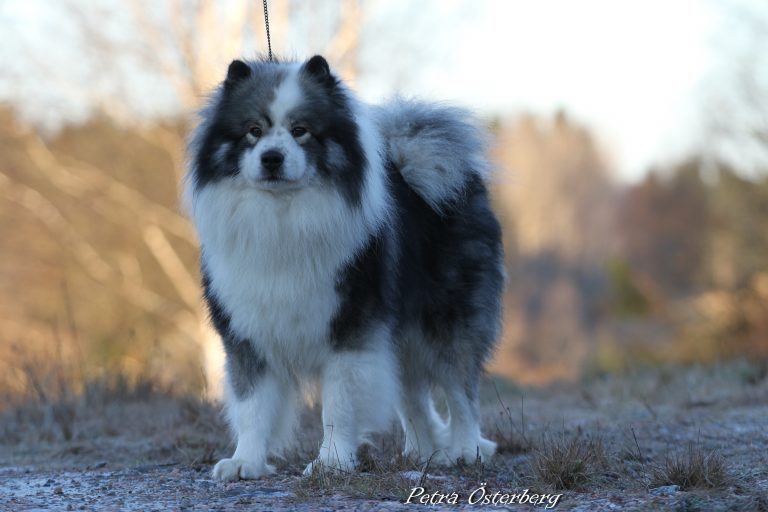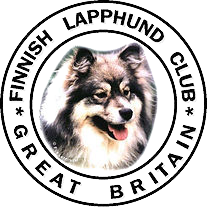Breed Standard

The ‘Breed Standard’ is the guideline which describes the ideal characteristics, temperament and appearance of a breed and ensures that the breed is fit for function.
Breeders and judges should avoid obvious conditions or exaggerations which would be detrimental in any way to the health, welfare or soundness of this breed.
From time to time certain conditions or exaggerations may be considered to have the potential to affect dogs in some breeds adversely, and judges and breeders are requested to refer to the Kennel Club website for details of any such current issues. If a feature or quality is desirable it should only be present in the right measure. However, if a dog possesses a feature, characteristic or colour described as unacceptable, it must not be rewarded in the show ring.
Kennel Club Breed Standard
The breed standard was last updated in the UK in September 2016. This contained a change to the colour description to include “except merle”. The Royal Kennel Club have included this into the standard of many breeds to protect against ‘designer’ or ‘colour’ breeders.
The Finnish Lapphund is a member of the Pastoral Group of breeds in the UK.
General appearance
Strongly built dog, smaller than medium size. Body slightly longer than height at withers. Coat long and profuse.
Characteristics
Tendency to herd.
Temperament
Intelligent, brave, calm, faithful. Suitable as companion and watch dog.
Head and skull
Strong featured, comparatively broad, bitches more refined, forehead slightly rounded; stop clearly defined. Muzzle shorter than skull, straight and slightly tapering when viewed from both above and side. Nose and eye rims as dark as compatible with coat colour.
Eyes
Oval shaped, dark brown or harmonising with coat colour. Expression soft and friendly.
Ears
Erect or semi-erect. Medium size, set well apart, broad at base and very mobile.
Mouth
Jaws strong with perfect, regular and complete scissor bite, i.e. upper teeth closely overlapping lower teeth and set square to the jaw. Lips tight.
Neck
Medium long, strong, covered with thick hair.
Forequarters
Shoulder and upper arm of approximately equal length. Shoulder moderately laid back and forming a rather open angle with upper arm. Legs well boned, strong, straight and parallel. Elbow placed slightly lower than the lower edge of brisket. Pasterns of medium length, flexible and slightly sloping.
Body
Firm. Back strong, straight and broad. Moderate spring of rib. Brisket deep and long almost reaching the level of the elbow. Depth of body slightly less than half the height at withers. Forechest clearly defined, of moderate width. Loin short and muscular. Slight tuck up. Croup medium length, well defined and slightly sloping. The body, measured from point of shoulder to point of buttock, slightly longer than height at withers.
Hindquarters
Strong boned, powerful, straight and parallel when viewed from behind. Moderate angulation. Muscular thighs. Hocks relatively low set.
Feet
Well arched, oval, covered with thick hair.
Tail
Medium length, high set, covered with profuse, long hair. Carried curved over the back or side when the dog is moving. May hang when the dog is at rest. Tip of tail may have a ‘J’ formed hook.
Gait/movement
Effortless, brisk, agile and straight. Medium length of stride, changing easily from trot to gallop.
Coat
Profuse. Outer coat long, coarse and straight. Shorter on the head and front of legs. Undercoat soft and dense. Males should have a more abundant mane.
Colour
All colours allowed except merle, which is unacceptable. Main colour must dominate. Markings differing from the main colour are permitted on head, neck, chest, legs, tail and underside of body
Size
Ideal height at withers, dogs 49cm (19¼ ins); bitches 44cm (17½ ins), with an allowance of 3cm (1¼ ins) either way. Type is more important than size.
Faults
Any departure from the foregoing points should be considered a fault and the seriousness with which the fault should be regarded should be in exact proportion to its degree and its effect upon the health and welfare of the dog and on the dog’s ability to perform its traditional work.
Note
Male animals should have two apparently normal testicles fully descended into the scrotum.
*Note for prospective puppy buyers
Size – The Kennel Club breed standard is a guide and description of the ideal for the breed; the size as described does not imply that a dog will match the measurements given (height or weight). A dog might be larger or smaller than the size measurements stated in the breed standard.
1st April 2025 – Colours updated
Last updated here 1st April 2025, Copyright The Kennel Club. Reproduced with their kind permission.
FCI Breed Standard
The FCI Breed Standard is used internationally, including Finland. In December 2016 the breeds official name changed from Finnish Lapphund to Finnish Lapponian Dog, currently at this time the UK has no plans to update the breed name here.
Finnish Lapphunds are classified by the FCI as Group 5: Spitz and Primitive types, Section 3: Nordic Watchdogs and Herders. You can download the FCI standard here.
